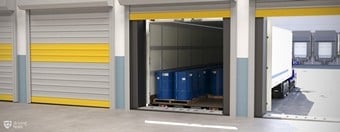

All your missed questions are saved
automatically for extra practice.




It's a practice test that's automatically made up of all your missed questions. Once you finish this test, you’ll be able to revisit your Challenge Bank™ to practice and sharpen your skills.
View All PlansAdding difficult questions to Challenge Bank™ is an exclusive Premium feature. Unlock access to 650+ exam-like questions, a Pass Guarantee, personalized study plans, and more.
View All PlansFree Maine CDL HazMat Endorsement Practice Test 2026
| 90-100 | => | 22% |
| 80-89 | => | 28% |
| 70-79 | => | 26% |
| 60-69 | => | 18% |
| <60% | => | 7% |
Whether driving through the mountainous and hilly areas in the western part of the state, the narrow rural roads (especially in northern Maine), or the dense forests and coastal areas, you can see a bit of everything while driving through the Pine Tree State. You must have set your sights on adding the Hazardous Materials (Hazmat) endorsement to your Commercial Driver’s License (CDL) to increase your marketability and potentially earn higher pay. Keep reading, because we will present the requirements as well as our streamlined approach to help you jump the hurdles.
The Hazmat endorsement permits drivers to transport materials that the U.S. government has deemed hazardous. In Maine, you might haul explosives, certain types of fuel, pulp and paper chemicals (there’s an important paper industry here), industrial chemicals, radioactive materials, and infectious substances. Because of this, the endorsement process contains several safeguards to ensure your preparedness and the safety of you, the people, and the environment.
The first step is passing a Transportation Security Administration (TSA) fingerprinting and background check. It’s important to note that the results can take weeks to arrive, so use that time wisely to study and practice for the second step: the DMV knowledge test. The knowledge test addresses federal regulations, substance handling, material packaging, quantity limits, and several other topics. You’ll need a score of 80% on Maine’s knowledge test, which is made up of 30 questions (Maine CDL Handbook 2026).


Reviewed for legal and handbook accuracy
M.S., Chief Educational Researcher (ACES member)
Last verified for accuracy on
Real Maine drivers who passed first try
Verified student reviews • Shared with permission
About the Maine CDL
We can hear you now: “Explosives? Radioactive materials? Tests?” All this may sound a little overwhelming, but it doesn’t have to be. Our online Maine DMV Hazmat Endorsement practice tests are strategically designed to avoid the mountain of information you’ll find online and get straight to what’s relevant. Our practice tests mimic what you will face on the official DMV test. We have everything you need to prepare for the practice test!
Remember why you’re doing this! It’s not to add another notch to your endorsement belt. It’s for more opportunities and potentially more income. There are multiple industries in Maine that require a Hazmat endorsement, including Verso Corporation (Jay), Irving Oil (Portland), Sappi North America (Skowhegan), and Cianbro Corporation (Pittsfield).
Once you receive your TSA results and feel confidently prepared, you’ll visit the DMV with the necessary documents, pay the fees, and confidently take the test.
More ME CDL test resources
Are you in another state?
- Alabama
- Alaska
- Arizona
- Arkansas
- California
- Colorado
- Connecticut
- Delaware
- District of Columbia
- Florida
- Georgia
- Hawaii
- Idaho
- Illinois
- Indiana
- Iowa
- Kansas
- Kentucky
- Louisiana
- Maine
- Maryland
- Massachusetts
- Michigan
- Minnesota
- Mississippi
- Missouri
- Montana
- Nebraska
- Nevada
- New Hampshire
- New Jersey
- New Mexico
- New York
- North Carolina
- North Dakota
- Ohio
- Oklahoma
- Oregon
- Pennsylvania
- Rhode Island
- South Carolina
- South Dakota
- Tennessee
- Texas
- Utah
- Vermont
- Virginia
- Washington
- West Virginia
- Wisconsin
- Wyoming
We know what it takes to pass. And we’ve got the proof.
Driver’s Ed is - nobody wants to set foot inside the DMV. That’s why millions of learners trust us for simple, visual, effective prep.
An official & trusted partner in driver education
We are an officially recognized FMCSA Entry-Level Driver Training provider and a proud partner to over 2,500 libraries. We work with safety organizations like GHSA and the National Safety Council to help create safer roads for everyone.






A smarter way to study
Challenge Bank™
Our trademarked system automatically saves questions you miss, creating personalized tests that target your weak spots until you’ve mastered the material.
AI-powered feedback
Get smarter as you study. Our new AI-powered feedback provides detailed, question-level insights to help you understand the why behind each answer.
Interactive handbook
Go beyond the boring black-and-white manual. Our interactive handbook lets you read, listen with an MP3 audio version, or even chat with it to find the information you need, faster.
We build our practice questions from the current 2026 ME Driver Handbook and refine them using patterns recent test‑takers report.
Driver handbook • Knowledge‑test/permit overview • Fees & ID requirements • Office/appointment info
We mirror recurring themes (e.g., right‑of‑way traps, sign look‑alikes) and use similar distractors and wording styles.
We don’t collect or publish actual test items and we’re not affiliated with DMV.

